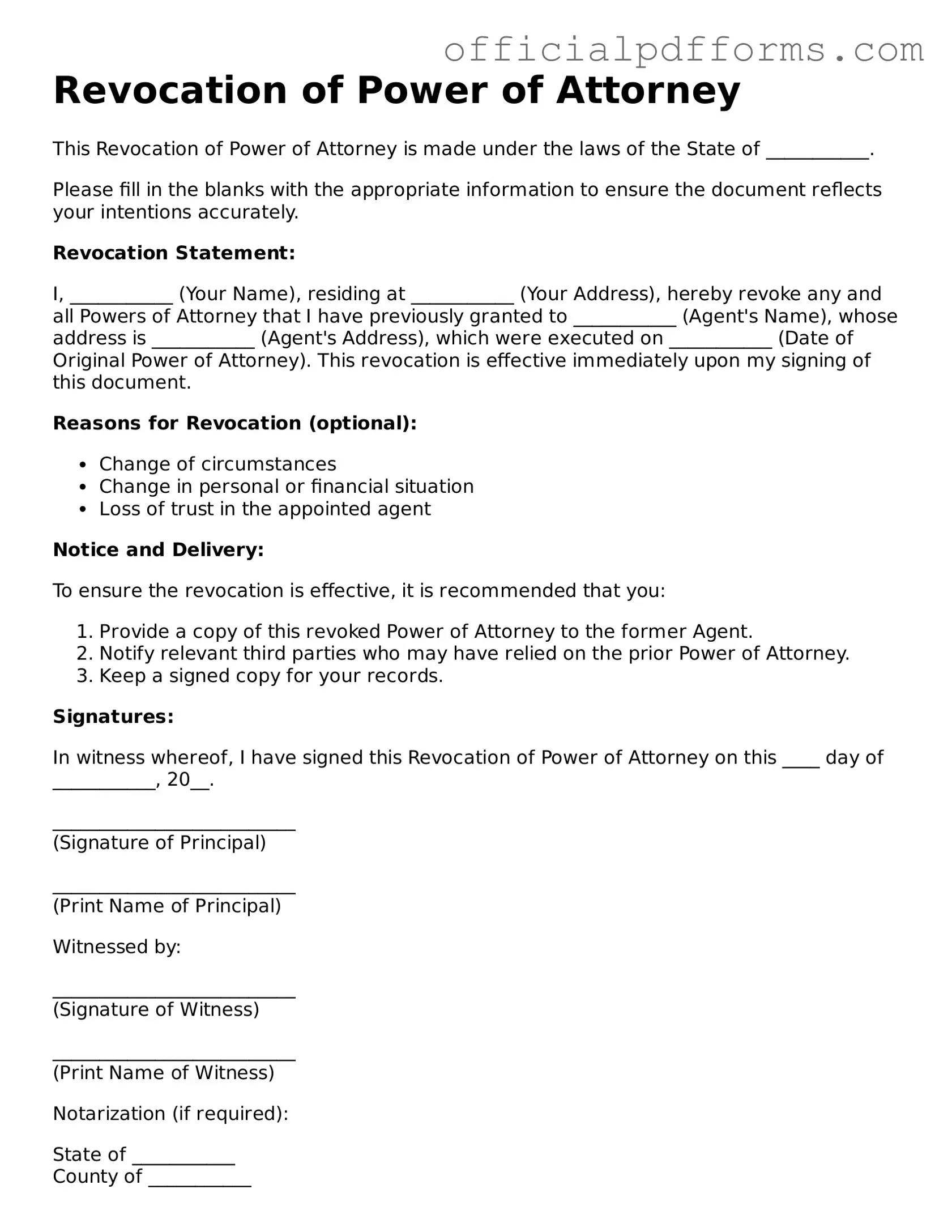A Revocation of Power of Attorney form is a legal document that allows an individual to cancel or revoke a previously granted Power of Attorney. This form is essential when the principal (the person who created the Power of Attorney) decides they no longer want to give authority to the agent (the person designated to act on their behalf). It ensures that the agent can no longer make decisions or take actions on behalf of the principal.
You should consider using a Revocation of Power of Attorney form in several situations, including:
-
If you no longer trust the agent you appointed.
-
If your circumstances have changed, such as moving to a different state.
-
If you want to appoint a new agent and need to revoke the previous authority.
-
If you have regained capacity and wish to manage your affairs personally.
Completing the Revocation of Power of Attorney form typically involves the following steps:
-
Identify yourself as the principal and provide your contact information.
-
Clearly state that you are revoking the previous Power of Attorney.
-
Include the name of the agent you are revoking the authority from.
-
Sign and date the document in the presence of a notary public, if required by your state.
Ensure that you keep a copy for your records and distribute copies to relevant parties, including the agent and any institutions that may have relied on the original Power of Attorney.
The requirement for a witness or notary varies by state. Many states require the Revocation of Power of Attorney to be notarized, while others may only require a witness. It is crucial to check your state’s specific laws to ensure that the revocation is valid and enforceable.
After submitting the Revocation of Power of Attorney form, the previous agent no longer has the authority to act on your behalf. It is important to notify the agent directly about the revocation. Additionally, inform any financial institutions, healthcare providers, or other entities that may have relied on the original Power of Attorney. This step helps prevent any confusion or unauthorized actions in the future.
Can I revoke a Power of Attorney if I am incapacitated?
If you are incapacitated, revoking a Power of Attorney can be more complicated. Generally, a principal must be of sound mind to revoke a Power of Attorney. If you are unable to make decisions, it may be necessary for a court to intervene. In such cases, a legal professional can guide you through the process and help ensure your wishes are honored.
